These are the ideal levels for pool chemistry, or the most acceptable range for proper pool water chemistry. However, while these are the average ideal ranges, certain situations may call for certain levels to be slightly elevated or decreased. Here are the pool chemical level charts for the most common chemicals!
Ideal Pool Water Chemical Levels
- pH: 7.4 to 7.6
- Total Alkalinity: 80–120 parts per million (ppm)
- Calcium Hardness: 200–400 ppm
- Cyanuric Acid: 30–50 ppm
- Free Available Chlorine: 2.0–4.0 ppm
pH Chart
Use this pool pH dosage chart to determine how to properly adjust the pH level in your pool. A low pH of 7.1 is desirable when using chlorine and sock, but 7.4 is best for swimmer comfort, surface protection, and overall water balance.
Lowering pH with pH Reducer
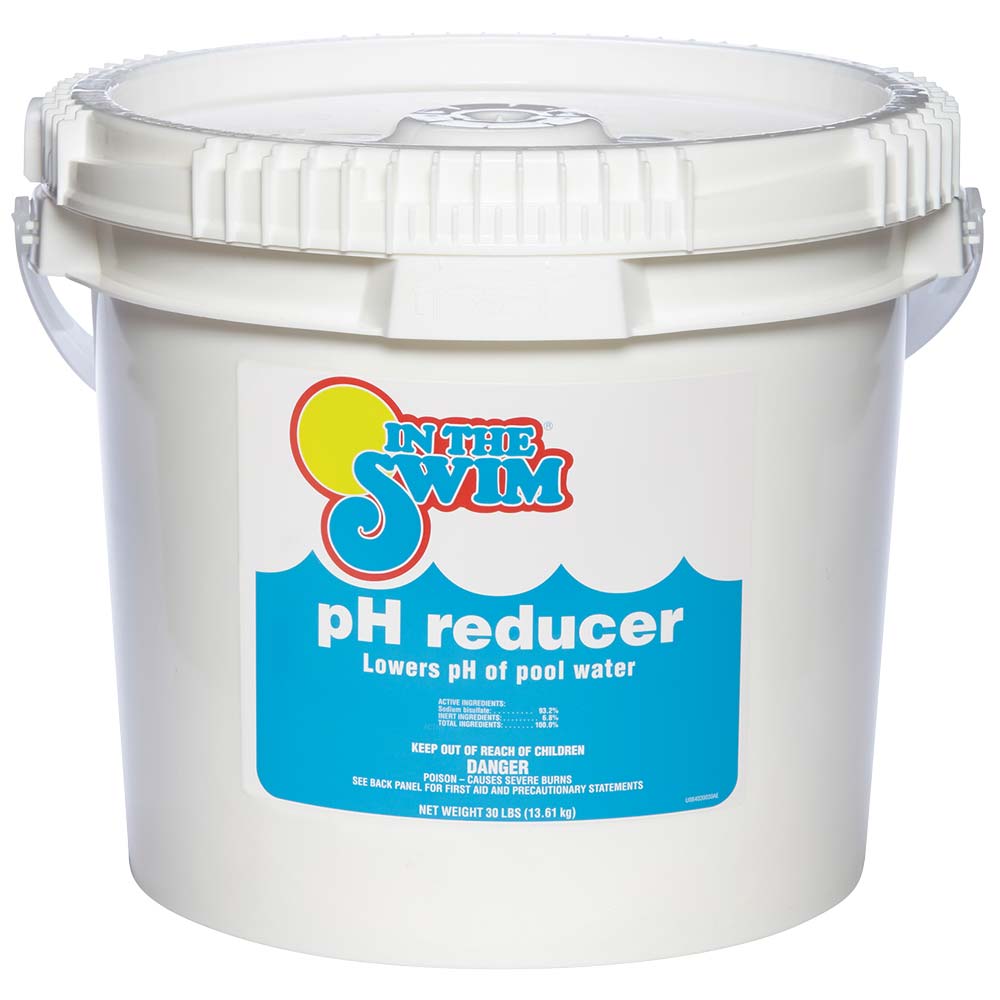
| Pool Volume | ||||
|---|---|---|---|---|
| Reduce to | 5,000 gallons | 10,000 gallons | 15,000 gallons | 20,000 gallons |
| 8.5–7.5 | 8 oz | 1 lb | 1 lb 8 oz | 2 lb |
| 8.0–7.5 | 5.1 oz | 10.2 oz | 15 oz | 1 lb 5 oz |
| 7.7–7.5 | 2.6 oz | 5.2 oz | 7.7 oz | 10.5 oz |
| 7.5–7.1 | 9 oz | 1 lb 1 oz | 1 lb 10 oz | 2 lb |
Raising pH with pH Increaser
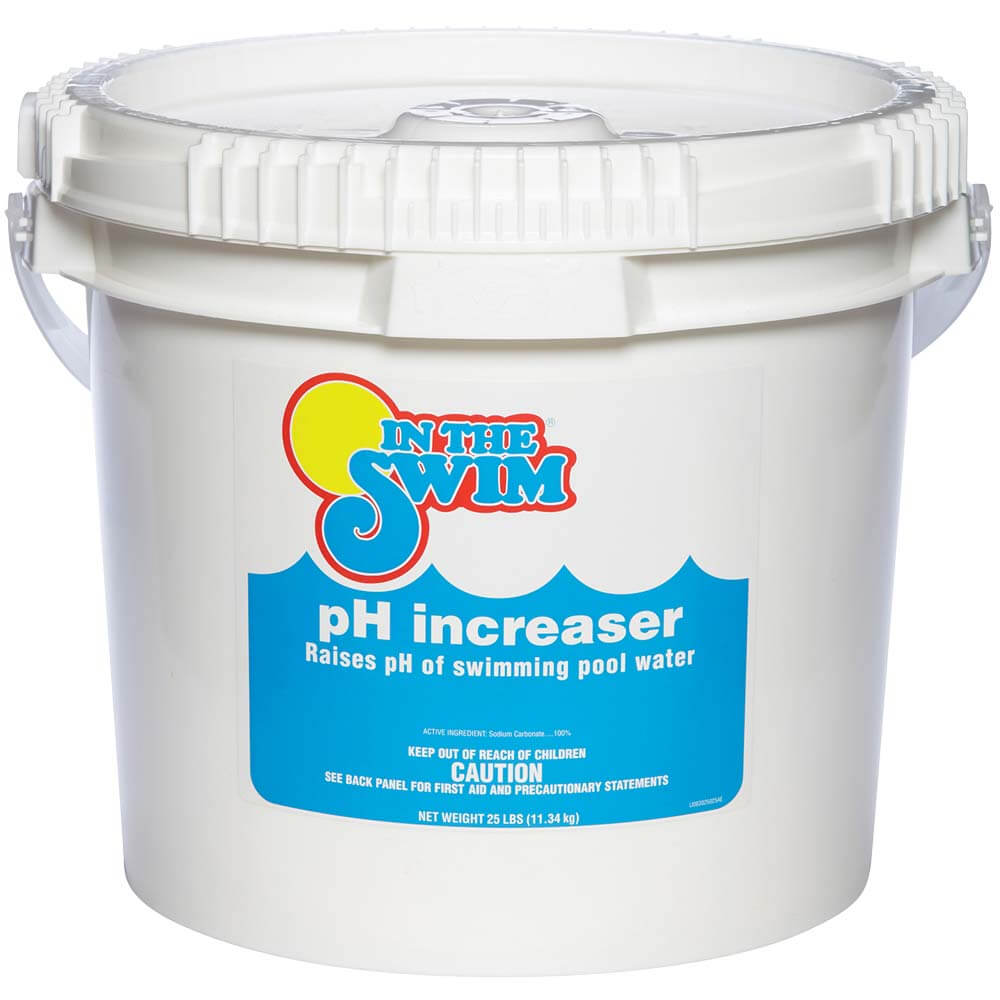
| Pool Volume | ||||
|---|---|---|---|---|
| Increase to | 5,000 gallons | 10,000 gallons | 15,000 gallons | 20,000 gallons |
| 7.2–7.4 | 1.7 oz | 3.4 lb | 5.1 oz | 6.8 oz |
| 7.0–7.5 | 4.6 oz | 9.2 oz | 13.8 oz | 1 lb 2 oz |
| 6.5–7.5 | 14 oz | 1 lb 12 oz | 2 lb 10 oz | 4 lb 7 oz |
Total Alkalinity Chart
Use this Total Alkalinity (TA) dosage chart to determine the correct amount of adjustment chemical to use for a desired change in TA levels. Remember — TA buffers pH — so too little TA makes pH erratic, and too much makes pH resistant to change. Use pH Reducer to lower Total Alkalinity, and Alkalinity Increaser to raise the level.
Lowering Total Alkalinity with pH Reducer

| Pool Volume | ||||
|---|---|---|---|---|
| Reduce by | 5,000 gallons | 10,000 gallons | 15,000 gallons | 20,000 gallons |
| 10 ppm | 12.8 oz | 1 lb 9 oz | 2 lb 6 oz | 3 lb 3 oz |
| 20 ppm | 1 lb 9 oz | 3 lb 3 oz | 4 lb 13 oz | 6 lb 7 oz |
| 30 ppm | 2 lb 7 oz | 4 lb 13 oz | 7 lb 3 oz | 9 lb 10 oz |
| 40 ppm | 3 lb 3 oz | 6 lb 6 oz | 9 lb 10 oz | 12 lb 15 oz |
| 50 ppm | 4 lb | 8 lb | 12 lb | 16 lb |
| 60 ppm | 4 lb 13 oz | 9 lb 10 oz | 14 lb 6 oz | 19 lb 4 oz |
| 70 ppm | 5 lb 10 oz | 11 lb 4 oz | 16 lb 13 oz | 22 lb 6 oz |
| 80 ppm | 6 lb 6 oz | 12 lb 13 oz | 19 lb 13 oz | 25 lb 8 oz |
| 90 ppm | 7 lb 4 oz | 14 lb 8 oz | 21 lb 10 oz | 28 lb |
| 100 ppm | 8 lb | 16 lb | 24 lb | 32 lb |
Raising Total Alkalinity with Alkalinity Increaser
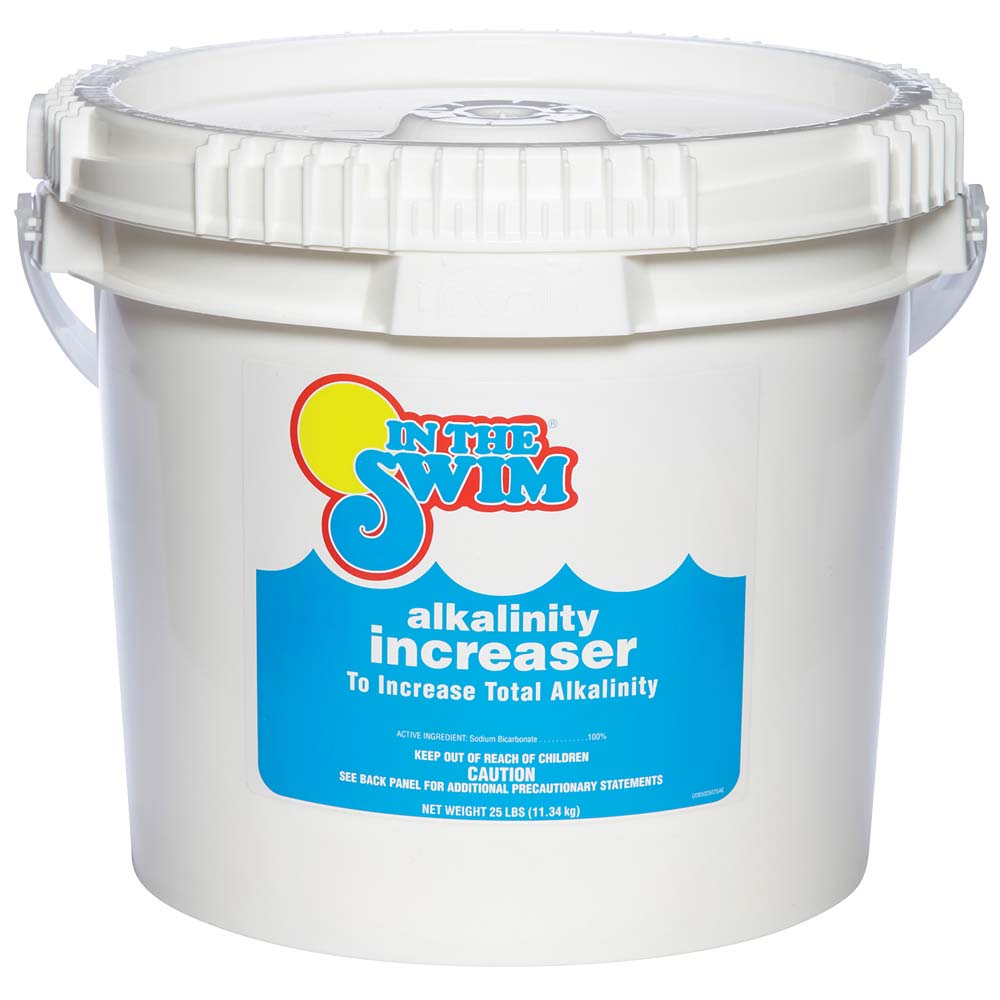
| Pool Volume | ||||
|---|---|---|---|---|
| Increase by | 5,000 gallons | 10,000 gallons | 15,000 gallons | 20,000 gallons |
| 10 ppm | 12 oz | 1 lb 8 oz | 2 lb 4 oz | 3 lb |
| 20 ppm | 1 lb 8 oz | 3 lb | 4 lb 8 oz | 6 lb |
| 30 ppm | 2 lb 4 oz | 4 lb 8 oz | 6 lb 12 oz | 9 lb |
| 40 ppm | 3 lb | 6 lb | 9 lb | 12 lb |
| 50 ppm | 3 lb 12 oz | 7 lb 8 oz | 11 lb 4 oz | 15 lb |
| 60 ppm | 4 lb 8 oz | 9 lb | 13 lb | 18 lb |
| 70 ppm | 5 lb 4 oz | 10 lb 8 oz | 15 lb 12 oz | 21 lb |
| 80 ppm | 6 lb | 12 lb | 18 lb | 24 lb |
| 90 ppm | 6 lb 12 oz | 13 lb 8 oz | 20 lb 4 oz | 27 lb |
| 100 ppm | 7 lb 8 oz | 15 lb | 22 lb 8 oz | 30 lb |
Calcium Hardness Chart
Use this Calcium Hardness chart to determine the correct amount of increaser to add for a desired change in hardness levels. To lower pool water hardness, the solution is dilution! If your water has less than 200 ppm of total hardness, add Calcium Increaser.
Raising Calcium Hardness with Calcium Increaser
| Pool Volume | ||||
|---|---|---|---|---|
| Increase by | 5,000 gallons | 10,000 gallons | 15,000 gallons | 20,000 gallons |
| 10 ppm | 10 oz | 1 lb 4 oz | 1 lb 14 oz | 2 lb 8 oz |
| 20 ppm | 1 lb 4 oz | 2 lb 8 oz | 3 lb 12 oz | 5 lb |
| 30 ppm | 1 lb 14 oz | 3 lb 12 oz | 5 lb 10 oz | 7 lb 8 oz |
| 40 ppm | 2 lb 8 oz | 5 lb | 7 lb 8 oz | 10 lb |
| 50 ppm | 3 lb 2 oz | 6 lb 4 oz | 9 lb 6 oz | 12 lb 8 oz |
| 60 ppm | 3 lb 12 oz | 7 lb 8 oz | 11 lb 4 oz | 15 lb |
| 70 ppm | 4 lb 6 oz | 8 lb 12 oz | 13 lb 2 oz | 17 lb 8 oz |
| 80 ppm | 5 lb | 10 lb | 15 lb | 20 lb |
| 90 ppm | 5 lb 10 oz | 11 lb 4 oz | 16 lb 4 oz | 22 lb 8 oz |
| 100 ppm | 6 lb 4 oz | 12 lb 8 oz | 18 lb 12 oz | 25 lb |
Chlorine Chart
Use this pool shock dosage chart to determine the correct amount of pool shock treatment. 30 ppm chlorine shock chart for killing algae and bacteria, and the 3.0 ppm super chlorination chart, used for cloudy water, after rain or heavy use, or low chlorine levels.
Raising Chlorine Level to 30 ppm with Shock
| Pool Volume | ||||
|---|---|---|---|---|
| Shock type | 5,000 gallons | 10,000 gallons | 15,000 gallons | 20,000 gallons |
| Di Chlor 56% | 2.1 lb | 4.25 lb | 6.4 lb | 8.5 lb |
| Cal-Hypo 65% | 1.8 lb | 3.63 lb | 5.45 lb | 7.25 lb |
| Cal-Hypo 73% | 1.65 lb | 3.25 lb | 4.90 lb | 6.50 lb |
Raising Chlorine Level by 3.0 ppm with Shock
| Pool Volume | ||||
|---|---|---|---|---|
| Shock type | 5,000 gallons | 10,000 gallons | 15,000 gallons | 20,000 gallons |
| Di Chlor 56% | 3.3 oz | 6.5 oz | 10 oz | 13 oz |
| Cal-Hypo 65% | 3 oz | 6 oz | 9 oz | 12 oz |
| Cal-Hypo 73% | 2.6 oz | 5.2 oz | 8 oz | 10 oz |
Cyanuric Acid Chart
Use this Stabilizer dosage chart to determine the correct amount of Cyanuric Acid stabilizer or conditioner to add for a desired increase. To lower stabilizer levels, the solution is dilution! If you use stabilized pool chlorine tablets, you will add 10 ppm per month.
Raising Cyanuric Acid with Stabilizer
| Pool Volume | ||||
|---|---|---|---|---|
| Increase by | 5,000 gallons | 10,000 gallons | 15,000 gallons | 20,000 gallons |
| 10 ppm | 6.5 oz | 13 oz | 19.5 oz | 26 oz |
| 20 ppm | 13 oz | 26 oz | 39 oz | 52 oz |
| 30 ppm | 19.5 oz | 39 oz | 58.5 oz | 78 oz |
| 40 ppm | 26 oz | 52 oz | 78 oz | 104 oz |
| 50 ppm | 32.5 oz | 65 oz | 97 oz | 130 oz |
Students of pool-ology can find these pool chemical dosage charts useful in balancing pool water correctly. Bookmark this page (Ctrl-D) for easy reference later! Or, click this link and type Ctrl-P for a printer-friendly pool chemical chart you can use as a study guide.
You can also find these pool chemical charts useful to display nicely on a mobile device, when you are by the pool, wondering how much pool chemical to add…
Don’t play fast and loose with your pool chemistry! Consult a pool chemical table for accurate pool chemical dosing!

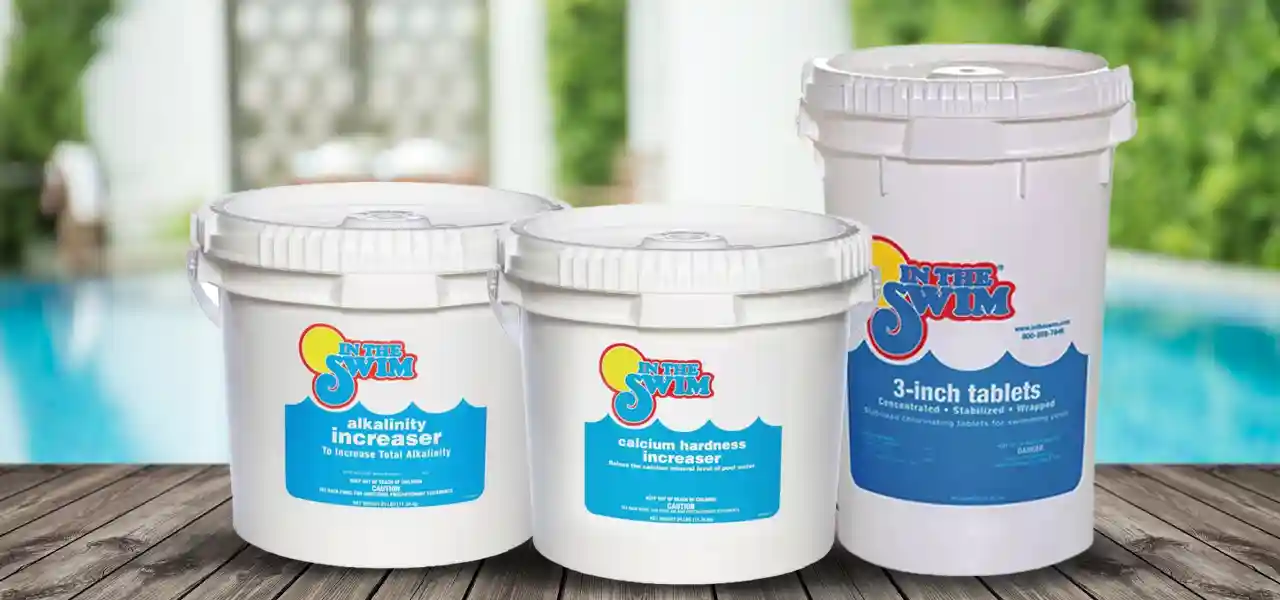


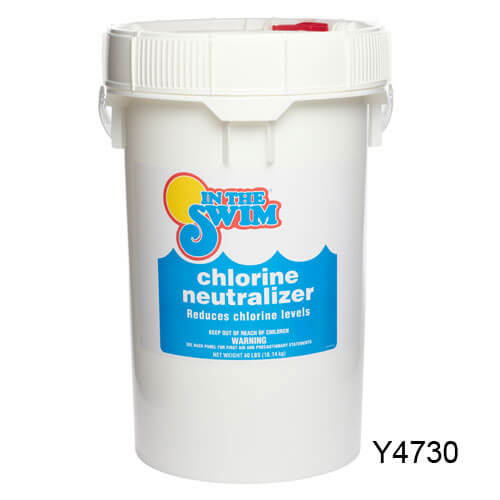
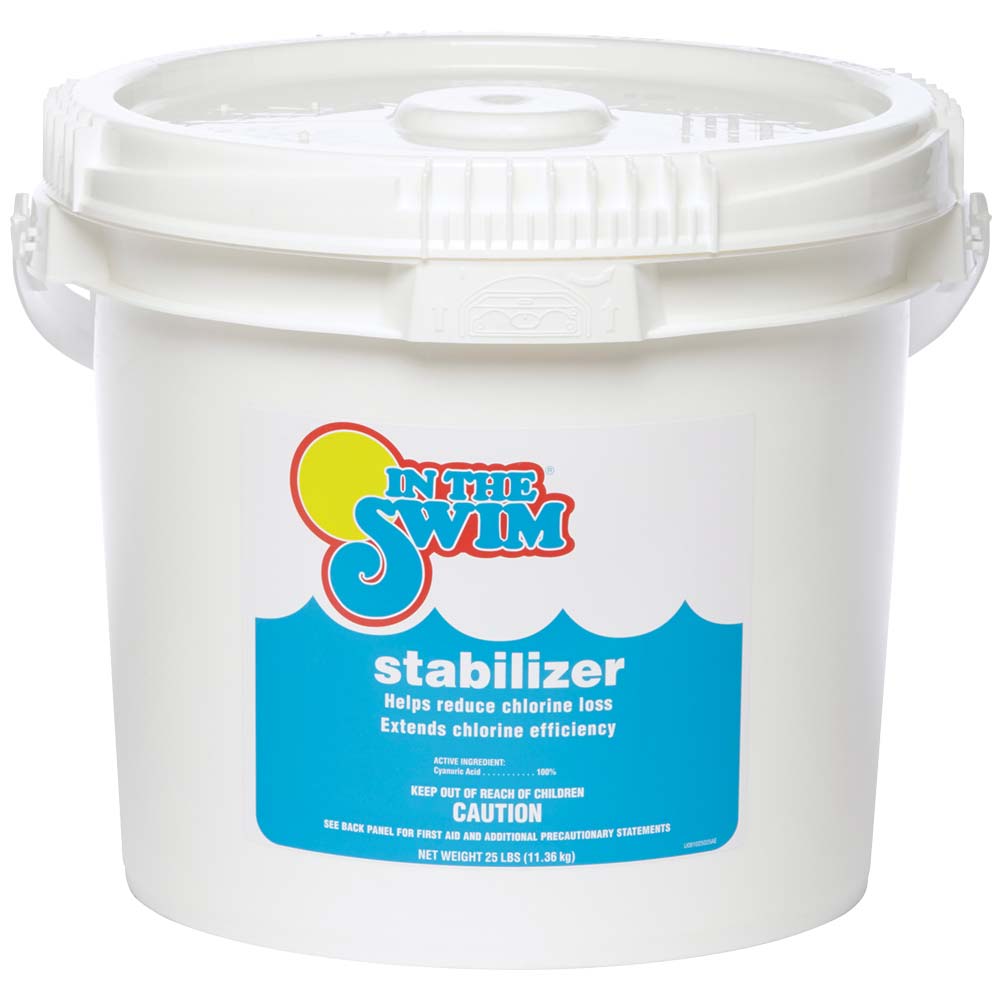
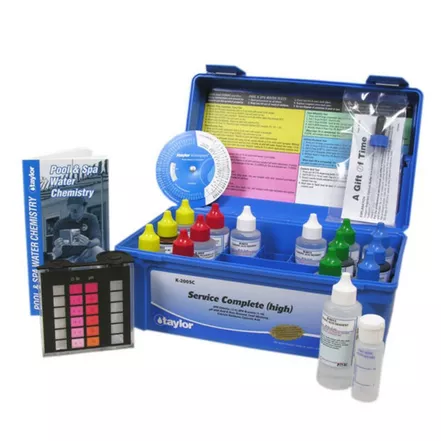
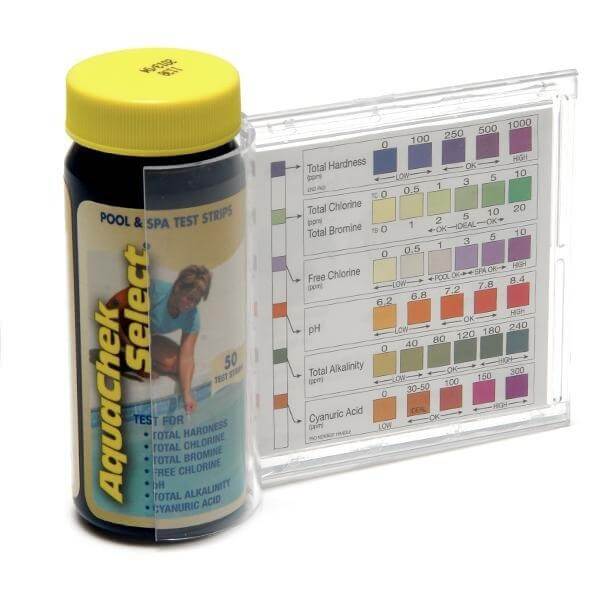
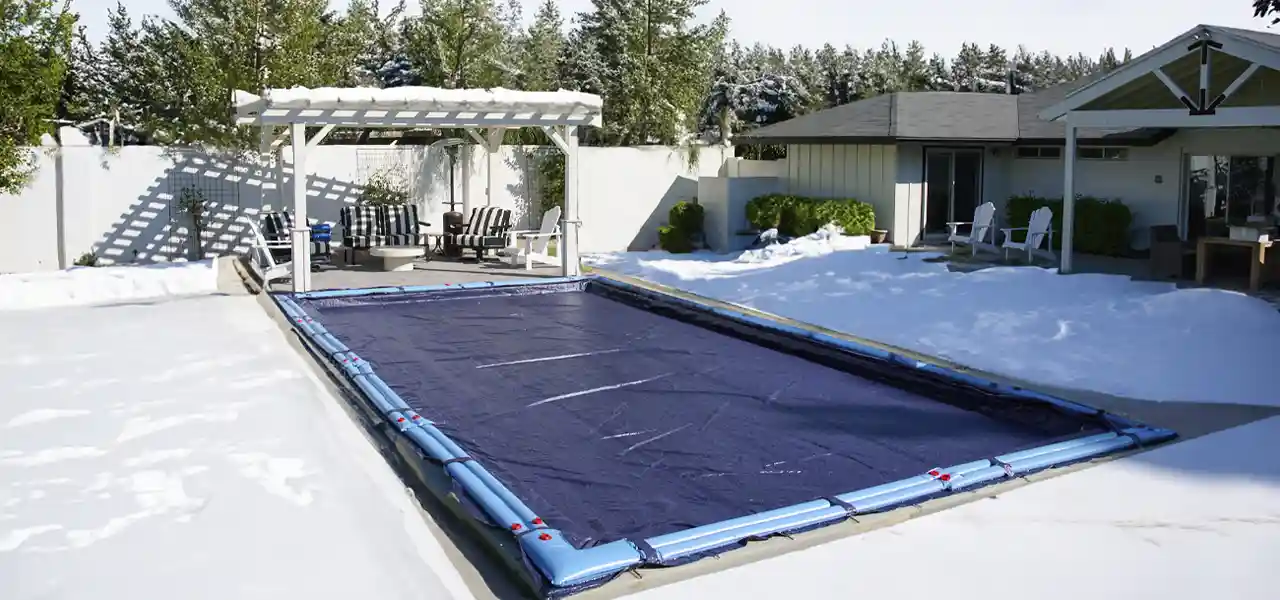

well get Ready ,I back wash my filter and the ash from the fires clogged my filter over night,so if you live ware there are fires.expect to back wash a lot
The rest of the world uses the METRIC system, so do you have a chart in metric
Barry, you are so right my man! My apologies I do not have a metric chart, and will put it on my list, it’s a great idea. You know, years ago when I was a kid and they were teaching us the metric system, I think I remember our teachers saying that by 2000, we (America) would be completely metric! Not even close… 🙁
Do you have chemicals charts for a saltwater pool?
Hi Laurie, is this a trick question? 🙂 These are the chemical charts for a saltwater pool (and a regular pool too). You manage both the same when it comes to water balance, and chlorine level. Thanks for asking!
My water is cloudy, so I tested it with a basic strip test. FC and alkalinity are fine, but PH is very low.
I added sodium carbonate, but no change.
Any ideas?
Hi Rob, add some more pH Up, or sodium carbonate, aka soda ash. Try to get pH above 7.2, although low pH is not normally associated with cloudy water. I would look closer to your filtration, and the amount of daily time it runs (might need more), and try to improve filtration with a Filter Cleaner, or using a Clarifier or you might be ready for new Filter Media (sand/cartrige). Shocking the pool lightly can often help correct cloudy water.
Do you have a chart for lowering alkalinity with muriatic acid? I have an old one I can hardly read. It has the current alkalinity reading down the left side (ppm CaCo3), the pool gallons along the top, and it gives the amount of acid needed in ounces or pints on the chart itself.
Hi Davy, do you have any feedback on the concept that the required free Cl level (for both maintenance and shock) should be based on CYA level? It seems to make sense, but I have never seen it suggested anywhere except one forum and other articles referencing that forum.
Also, if trichlor tablets raise the CYA 10 ppm per month, doesn’t this mostly prevent their use in order to maintain the correct CYA level?
Hi Matt, a few persons well versed in pool chemistry, Ben Powell and Chem Geek, to name a few, make the suggestions and offer proof that – as cya levels rise, one should also maintain a higher level of free chlorine, for daily sanitation and a higher target range for superchlorination. This is based on the fact that cya suppresses chlorine activity, making it sluggish, and in order to counteract the effect, an equal amount of free chlorine should be used. In practice, each pool is different, so if your water appears clear, and clean and you have no problems, you most likely don’t need to raise your FC level. Now for the buildup of cyanuric acid, in most pools that see frequent rain and backwashing and winterize for 5-6 months per year, this is not a problem. For pools in arid climates, that operate year around, cya can build-up too high. When cya exceeds 50 ppm, I like to see the pool diluted to bring the range down to 40 ppm or so. A product called Bio-Active is also available as a cyanuric acid reducer.
I have high calcium levels in my 10,000 gallon pool (530 – 660 ppm).
I understand pumping out pool water and replace with new water will address the problem. Is it advisable to connect the Automatic Water Leveler line (maintains the water level in the pool) to my house’s water softener system to filter out the calcium and other chemicals? Does replenishing pool water with “soft” water create other negative ramifications?
Hi James, yes if you can – connect the auto-fill to the home water softener supply. many folks with home water treatment systems don’t often realize that the outside spigots are not usually connected to the system, and often neither is the auto-fill. I think it is the way to go – should be no water chemistry considerations, other than filling with softer water, which over time will dilute the hardness level in the pool, and help keep it in check – but it’s a very slow process – years before you will see much effect, unless you regularly drain the pool thru long, weekly backwash or drain to waste (thru a multiport valve). replacing 3″ or so per week.